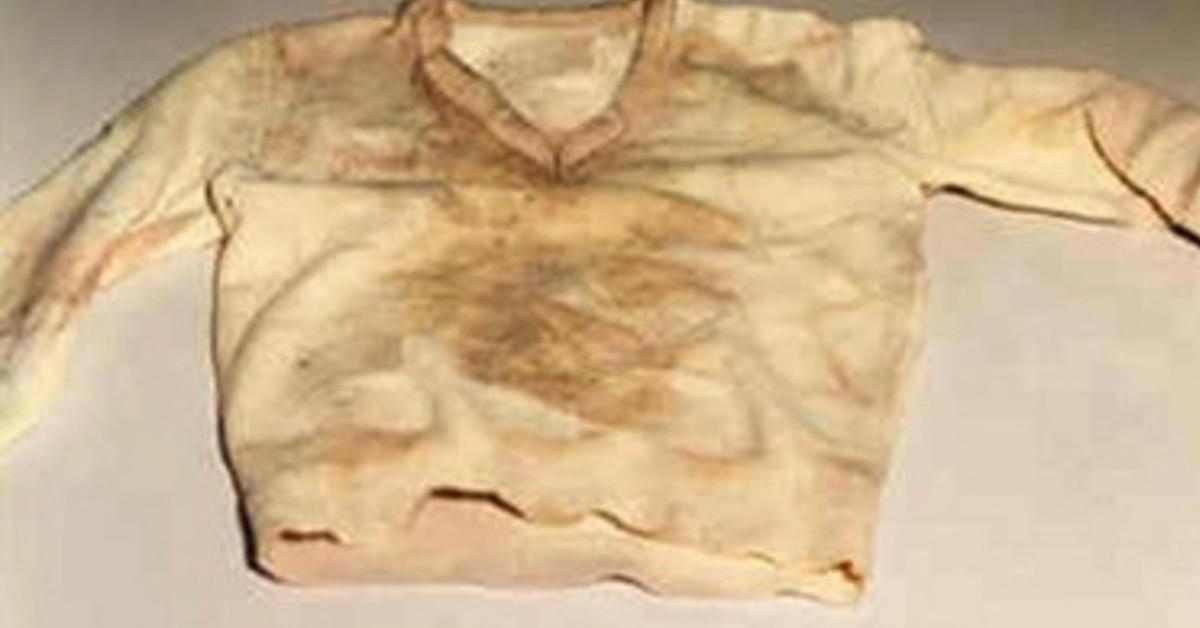A Headless Child Was Found in an Abandoned St. Louis Home in 1983. Her Identity Remains Unknown and Her Killer Free.

Investigators in Missouri couldn't pinpoint her exact age, but they estimated she was between 8 and 11 years old. Without her head, examiners couldn't be sure of her true height, either. She was called “Jane Doe” when detectives couldn’t name the little girl after a week of intense investigation.
Every officer at the murder scene took the image with him for the rest of his life, and several spent their law enforcement careers trying to solve the mystery of the mutilated girl in the basement.
In February 1983, the child's body was discovered by two men who entered the basement of an abandoned three-story building in St. Louis. They later told police all they wanted was a crowbar to help fix their broken-down vehicle, but authorities suspected they were looting.
When the men lit up the pitch-black basement with a Bic lighter, they found a brutalized, headless body on the floor near the furnace.
The body at first appeared to be a small Black woman. She wore red and purple nail polish only. On her naked body lay a stained, pale-yellow sweater. The girl’s hands were bound with red nylon cord.
The two men hailed the police, and veteran investigators Herb Riley and Joe Burgoon arrived on the scene. Neither homicide detective ever got the image out of his mind, and neither would ever give up looking for her killer.
Riley died in 1996, having solved all the 2,000 cases he was assigned over his career except two. Jane Doe was one, according to the River Front Times.
The problem soon became apparent: without a head, a face, or any other identity, solving Jane Doe’s murder was a fight against the odds. The case stalled at nearly every junction, and along the way her name has evolved to Little Jane Doe, sometimes also known as “Hope” — a child who no one seemed to be looking for.
FINDING JANE DOE
The homicide baffled detectives and shocked the community, but Riley and Burgoon began hunting down leads like bloodhounds with a scent. Child decapitation is rare, but the murder scene suggested the victim knew her killer.
If they could find her identity, they could solve the case. In nearly 40 years, no one has tracked down her name.
DNA provides a glimmer of hope, as cold case detectives are still confident that if Jane Doe’s DNA matches someone, the case is still solvable. DNA is the only hope to accomplish what decades of dedicated footwork couldn’t.
In Hollywood movies, psycho killers slice up bodies, but in real life, mutilation murders are rare. In St. Louis, the search for a little girl’s skull is over, but the hunt for her identity has never ended.
Riley and Burgoon estimated Jane Doe’s age as between 7 and 12 because she had not yet gone through puberty, although the FBI later posted her age range as between 8 and 11 years. She weighed 60-70 pounds and may have been tall for her age, between 4-feet-10-inches and 5-feet-4-inches.

St. Louis
The two men set about checking school records for a missing child of the right age. After weeks of intensive work, they ruled out every child in five school districts covering most of St. Louis. They could not locate a missing child who fit Jane Doe’s profile.
The investigators knew who she wasn’t but not who she was, and most of a year had passed. Summer turned the bare trees of the city into thick green foliage, but Riley and Burgoon were no closer to a name.
Their ghoulish work centered on finding a decapitated head, now a skull.
DEAD ENDS AND KILLER CONFESSIONS
After searching down countless leads, the two detectives turned to psychics in desperation. Without any results, they vowed to never use another psychic but their last encounter, in which they mailed evidence — including the nylon rope that bound the victim, and her yellow sweater — resulted in disaster.
The key evidence was lost in the mail, according to the Times. They still had evidence photos, and descriptions but the sweater and rope were gone forever.
Cold-case detectives flew to Texas in to interview a known child-killer in 2013. They came away unconvinced that Tommy Lynn Sells, incarcerated on death row, was involved in Jane Doe’s death
Sells likely murdered multiple girls, up to a dozen, and was eventually executed by lethal injection on April 3, 2014. He was convicted for murder and attempted murder when he broke into a friend’s trailer in Del Rio, Texas, and attacked two sisters with a butcher knife, one 10 and the other 13.
The younger child survived her throat being slashed and later testified against Sells, according to The Dallas Morning News.
Sells boasted he’d committed murders across the country, while he hopped trains from Los Angeles to the east coast. He’d been in trouble with the law since the age of 21, murdering Kaylene “Katy” Harris in Del Rio when he was a 35-year-old drifter.
It would have taken a uniquely vicious individual to decapitate a child and a cold-blooded psychopath with a lucky streak to dispose of her head without a trace or a witness. Sells fit the bill, but ultimately detectives removed him from their list of suspects despite good evidence he’d murdered other children.
He made fantastic claims, was unreliable, and they could not show he was in St. Louis or even Missouri when Jane Doe was murdered.
Investigators also never let go of the suspicion the killer was a local who knew the city well.
DNA COMES UP SHORT
Investigators scoured missing children reports, looking for any reported missing child matching her characteristics.
After locating a likely possibility, they dialed the family and explained what they were trying to do. They meticulously ruled out victims, collecting DNA samples from 12 potential relatives who did not match Jane Doe’s DNA profile.
Although Jane Doe’s profile is in the FBI’s CODIS databank of DNA, she is a nameless victim without a family. The lead DNA Tech for the St. Louis Police Department, Mary Beth Karr, told the Times she thinks Jane Doe will one day be identified. For one thing, the St. Louis Police Department is unlikely to ever stop searching: the case is both infamous and haunting in the city’s history.

Jane Doe's Sweater
In April 2001, Kansas City, Missouri authorities came across a similar case. The victim was also decapitated, and a little girl. This child was much younger, estimated between one and three years of age. Her identity remained a mystery for four years, and authorities gave her the name “Precious Doe.”
Even though law enforcement recovered her severed head a few days after finding her body, they were unable to get an ID.
Some believed there could be a connection. Decapitated murder victims are extremely rare — a child killed and mutilated is one in a million. The fact Precious Doe turned up so near St. Louis made the two cases similar as well.
But in 2005, the mystery was solved. Precious Doe was Erica Green, who would have turned four in a few days, had she not been brutally beaten and decapitated with hedge clippers. Once Erica was identified, her killers were quickly apprehended.
Erica was murdered by her stepfather, Harrell Johnson, who was charged, along with Erica’s mother, Michelle Johnson. Both were later convicted of murder; Michelle’s eight other children were re-housed with relatives or taken into custody by the state, according to The Oklahoman.
Both victims were female, Black and dumped. But in the case of Green, her head was located a few days later not far from her body, wrapped in a trash bag and tossed into a nearby dumpster.
The search for whoever murdered Little Jane Doe stalled again.
LITTLE JANE DOE’S GRAVES
In 2013, authorities exhumed Jane Doe’s grave and the Smithsonian Institute did an analysis of her bones. The goal was to determine what their minerals revealed about where she lived her short life. The St. Louis detective working the case at the time, Dan Fox, indicated the mineral tests revealed Jane Doe was not from St. Louis, according to St. Louis Post-Dispatch.
They narrowed down her birthplace and childhood home to a southern state, Texas, or a handful of midwestern states.
On Feb. 8, the bones of the girl now called “Little Jane Does” was re-interred in the Garden of Innocents at Calvary Cemetery in St. Louis.
When she was found in the basement, the two men who stumbled upon her could tell detectives nothing. They hadn’t seen anyone and hadn’t been there long themselves. The only reason they’d crept down to the basement in the first place was because their car broke down, and they were searching for something to use as a tool.
But they did the right thing, they left the crime scene alone and notified authorities immediately.
The crime scene yielded important clues. Jane Doe’s body was drained of blooding, leading detectives to the solid conclusion she was killed elsewhere.
Although they were never able to determine whether the victim was raped, according to the Post-Dispatch, detectives found the Victorian three-story on Clemens Avenue intriguing. The house was boarded up but did not sit along a major road or thoroughfare. The killer would not have been passing through.

St. Louis
The investigators concluded the home was an unlikely random dumping ground. The killer was from the area, possibly the neighborhood. He would have chosen that house, perhaps because he knew the basement was rarely entered, to further conceal the body.
He dumped Jane Doe’s headless body hastily, leaving her on her stomach, hands snugly bound behind her back. He smeared the walls with blood as he carried her down the stairs into the basement.
Forensics at the time determined Jane Doe had been murdered within five days of her discovery and had been in the basement for approximately four days.
In an interview with Fox News in June 2013, Burgoon noted investigators believed Jane Doe was sexually assaulted. Her sweater, although grubby with dirt and blood, appeared to be newly purchased.
Burgoon noted, "[The killer] had to be familiar with the area. It's possible she was killed by a relative or someone she knew because her head was taken off."
ICE-COLD MYSTERY
When Burgoon and Riley caught the homicide, they believed it wouldn’t be their hardest case. While the murder scene was gruesome, both men had solved nearly all the homicide cases assigned to them.
They learned much about how she died but almost nothing about how she lived.
Jane Doe was strangled to death, probably by a man she knew who lived in St. Louis. Her killer cut off her head with “a large bladed knife,” according to The Doe Network.
But the identity of the victim has remained elusive despite national attention, and the mystery haunts the hundreds of people who’ve brushed up against this case over the years. Dozens of volunteers worked to find her gravesite after the original burial plot became obscured over time in St. Louis’ Washington Park Cemetery.
Burgoon has commented that “someone loved that little girl.” He noted she was well-cared for, not a child with prior broken bones that betrayed abuse, in an interview with St. Louis Post-Dispatch in 2013. She was well-nourished and well-developed.
A cold-case detective now, Burgoon is no longer actively working on finding Jane Doe’s killer. He admits it has haunted him, and every other officer who tried to solve the mystery.
Her gray granite tombstone is easier to find these days. On the lower right, the date she was found is etched in stone: Feb. 28, 1983. Next to it, an angel.
Above, most of the grave marker is blank, leaving space where a name might someday be inscribed.
Become a Front Page Detective
Sign up to receive breaking
Front Page Detectives
news and exclusive investigations.
